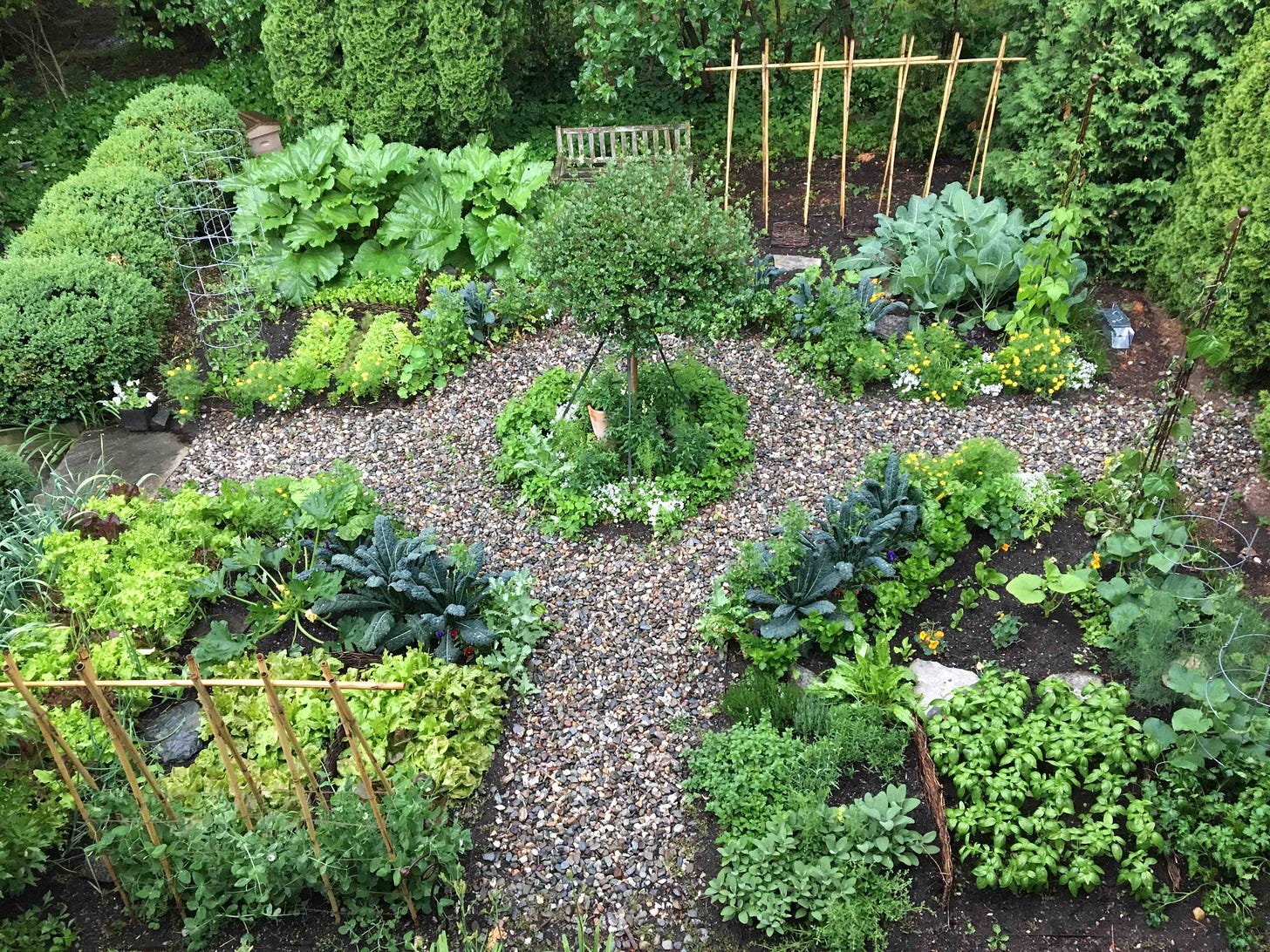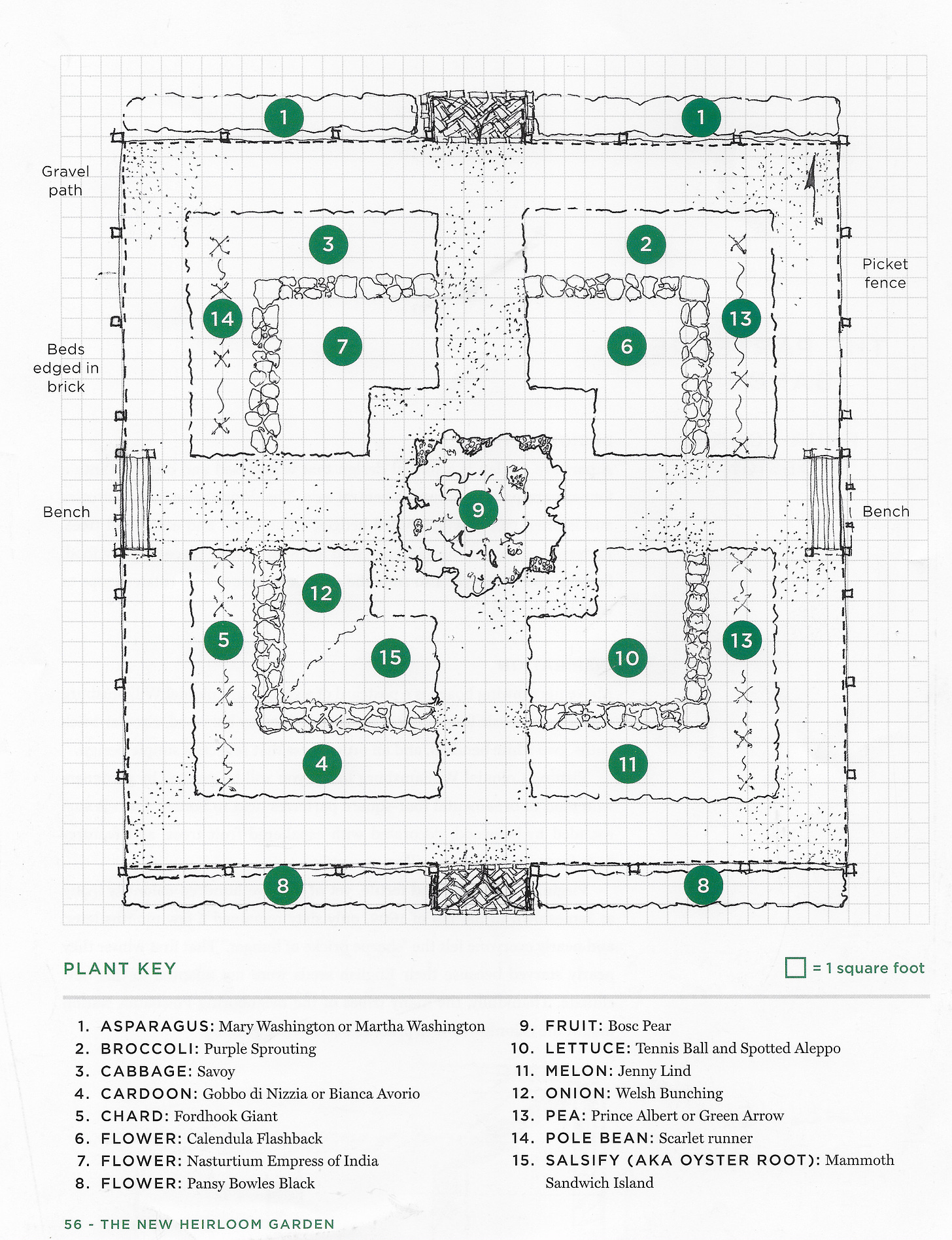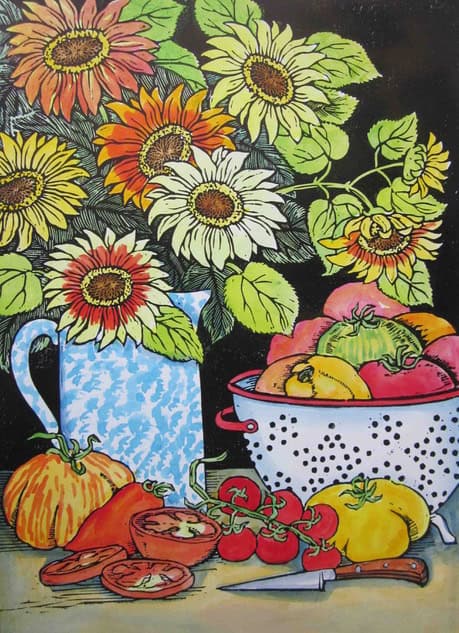Above my drawing desk is a postcard of a garden in Colonial Williamsburg depicting a classic four-square parterre, defined by boxwood circular brick paths, two white benches, and an orderliness that reflects a simple design.
Visiting Colonial Williamsburg today, you will be greeted by gardeners who tend to ornamental four square parterres next to homes. Each is surrounded by boxwood, decorate with espaliered fruit trees, and features beds fenced in by woven will or wattle.
Virginia soil is rich and fertile yet of the five hundred colonists living at Jamestown in the fall of 1609, only sixty remained a few months later, and nearly everyone feel the “sharpe price of hunger.” That first winter they nearly stared because their English seeds were not adapted to this new climate. Thankfully, the many tribes of the neighboring Powahtten Nation taught the colonists how to practice subsistence farming.
The four square or parterre garden is a classic design that fits into most home gardens. It is designed to be both decorative and practical, as the four square organic crop rotation feeds the soil, and nourishes the plants by moving them each year. Legumes follow root vegetables, vegetables follow fruiting vegetables; fruiting vegetables follow leafy greens and leafy greens ultimately follow legumes.
To inspire you to try a four-square for your garden, below is the Parterre garden design excerpted from my book, The New Heirloom Garden.





